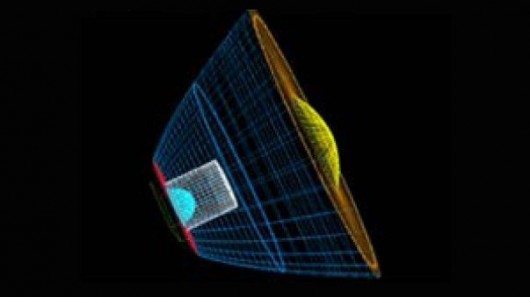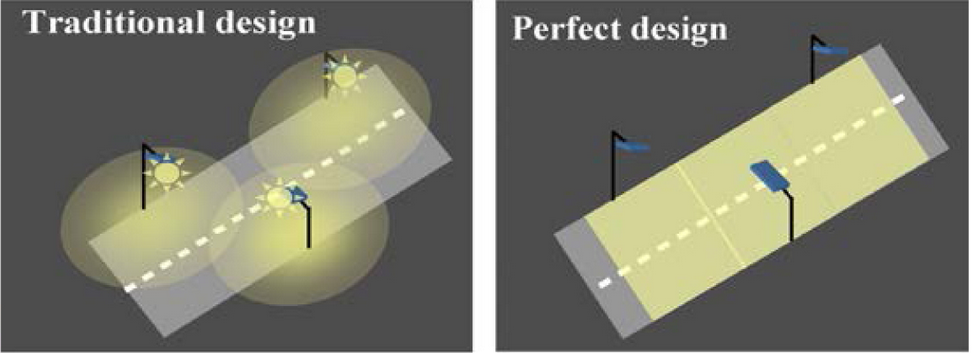For astronomers, a well-lit city means a sky unavailable for study. Worse, light pollution is blamed for affecting bird migration, sea turtle hatching, and wildlife mating and feeding routines. Researchers at National Central University, Taiwan, and Unidad Academica de Fisica, Universidad Autonoma de Zacatecas, Mexico, have attacked the problem with a new LED street lamp designed to shine only where needed, without splashing into unwanted areas, as a way to reduce light pollution while providing better lighting.
Current street lights often use high-pressure sodium or mercury lamps, and can spill light in unwanted directions, resulting in glare, non-uniform light patterns, upward-reflected light, and wasted energy. In some cases, nearly nearly half the light is lost by the light flooding horizontally and vertically, and conventional street lamp design has trouble adapting to different street lighting layouts, whether the lamps are set in the middle of the road, above it or in a zigzag pattern.

Schematic of the new street lamp
The research team proposes a new LED street lamp design based on a three-part lighting fixture, with the first part containing a cluster of high-efficiency LEDs. These use Total Internal Reflection (TIR) lenses, which focuses the light into parallel rays. The LEDs are mounted inside a reflecting cavity that helps keep the light from scattering and, as it leaves the unit, light is passed through a diffuser to reduce glare. According to the team, this design allows the lamp to project a uniform rectangle of light over a given area.

The LED street lamp was studied in simulation to determine the spread at a distance of 10 meters (33 ft) from the light source. This was measured by the team as the optical utilization factor (OUF), which describes the relationship between the flow rate of light at the target and the flow rate of light coming directly out of the LEDs. A higher OUF indicates better performance.
The simulation showed an OUF of 51 to 81 percent, compared to a conventional street lamp’s “excellent” performance of 45 percent. The proposed street lamp loses only two percent of its light as direct pollution and reduces energy consumption by 40 to 60 percent. The team also claims that the new lamp is relatively easy to fabricate because it only has four parts, with the LED component already an industry
The team plans to have a working prototype within three to six months, followed by practical installations of the new street lamp as early as next year.





